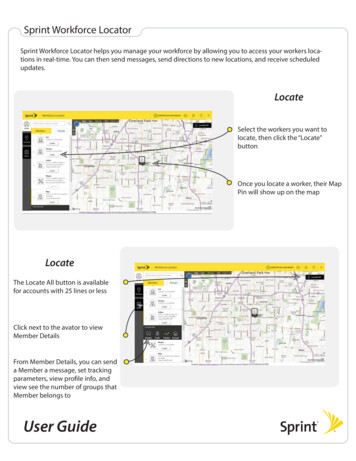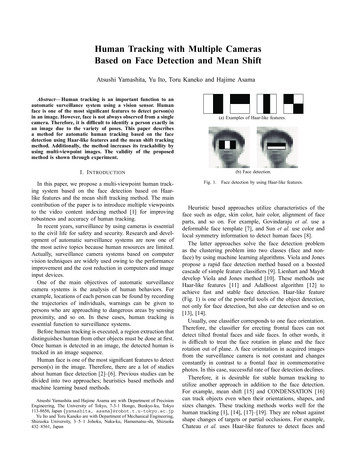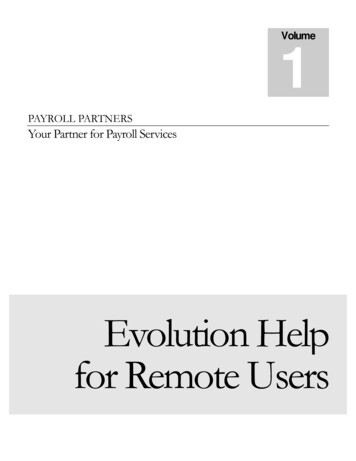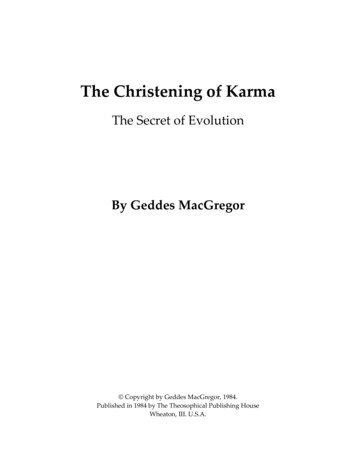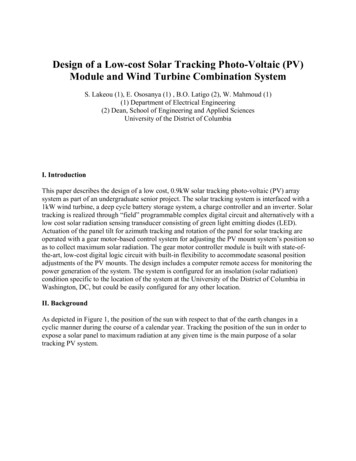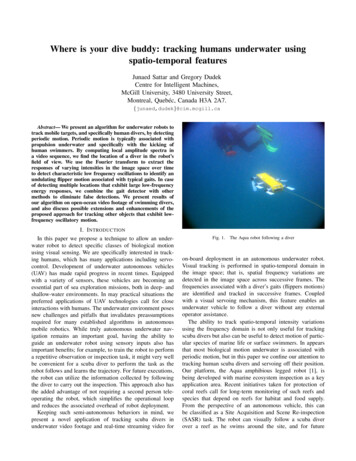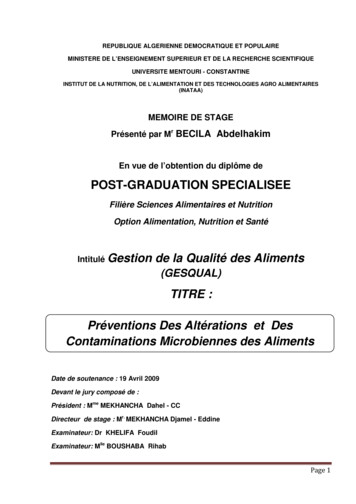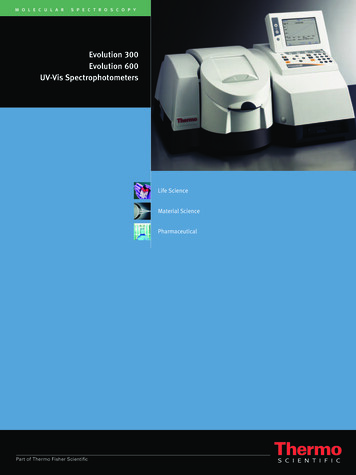Transcription
Tracking Human Evolution:Where Do We Fit on theTree of Life?Geology 230Fossils and Evolution
Amniotahttp://tolweb.org/Amniota/14990
Crocodileshatching fromtheir amnioteeggs
Pennsylvaniananapsid orstem reptile
AmnioteFamily TreeProthero, 2007
Synapsid Skull: oneopening behind theorbit (eye)Diapsid Skull: twoopenings behind theorbit (eye)
Synapsidahttp://tolweb.org/Synapsida/14845
Permian Synapsids, Germany
Triassic synapsid reptiles: Therapsids ormammal-like reptiles
Therapsida, Mammals and extinct relatives theledontidae (Ictidosauria)
A Gallery ofTherapsids
From Synapsids toMammals, a welldocumentedtransition seriesProthero, 2007Carl Buell
Prothero, 2007
Multiple bones in the lower jaw of the dino T. rex.
Yanoconodon, Lower Cretaceous Mammal from China
Yanoconodon, Lower Cretaceous of China,retains ear bones attached to inside lower jawMorganucodonYanoconodon
Human Ear Bones,or Auditory OssiclesCochlea
Mammaliahttp://tolweb.org/Mammalia/15040
Class Mammalia - Late Triassic to RecentSuperorder Tricodonta - Late Triassic to LateCretaceousSuperorder Multituberculata - Late Jurassic toEarly OligoceneSuperorder Monotremata - Early Cretaceousto RecentSuperorder Metatheria (Marsupials) - LateCretaceous to RecentSuperorder Eutheria (Placentals) - LateCretaceous to Recent
Evolution of Mammalian SuperordersMonotremesExtinct: U.Metatheria(Marsupials).Eutheria(Placentals)Live BirthMammary Glands?
Mammals in the Age of Dinosaurs
Hadrocodium, a lower Jurassicmammal with a “large” brain (6 mmbrain case in an 8 mm skull)
Lower Cretaceous mammal from China
Jawbones of a Cretaceousmarsupial from Mongolia
Mammal fossilfrom theCretaceous ofMongolia
EarlyCretaceousmammal atesmalldinosaursRepenomamus robustusfed on psittacosaurs.Image: Xu Xiaping, 2005
Repenomamus robustus
Repenomamus robustuswith psittacosaur in thegut
Modern Elephant Shrew
Weasel huntingat night
Bats, such as this vampire bat,hunt at night
Monotremes: Platypus
adultThe Platypuseggbaby
Monotremes: Echidna
The Echidna
TypicalMarsupial, aKangaroo
Poorly developednewbornkangarooattached to anipple in thepouch.
Eutheriahttp://tolweb.org/Eutheria/15997
Primate Classification- 1980’sOrder PrimatesSuborder Prosimii: tarsiers and lemursSuborder Anthropoidea: monkeys, apes, andhominidsSuperfamily HominoideaFamily Pongidae: great apesFamily Hominidae: Homo and hominidancestors
Primate Classification – 2000’sOrder PrimatesSuborder Prosimii: tarsiers and lemursSuborder Anthropoidea: monkeys, apes, andhominidsSuperfamily HominoideaFamily Hominidae: all hominoidsexcept gibbonsSubfamily Ponginae: orangutansSubfamily Homininae: gorillas, chimps,Homo and hominin ancestors
% genetic similaritywith humans100%96%95%98%84%58%91%Prothero, 2007
Tarsiers, a primitivePrimate (Prosimian)from Southeast Asia.
Tarsiersanctuary,Philippines
A Galago or bushbaby, a primitivePrimate(Prosimian) fromAfrica.
A Slow Loris, aprimitive Primate(Prosimian) fromSoutheast Asia.Check out thefingers.
Lemurs, primitive Primates(Prosimians) from Madagascar.
Monkeys, such as baboons, have tailsand are not hominoids.
Proconsul, the oldest hominoid, 18 MY
Hominoids
The Orangutan, a Great Ape fromSoutheast Asia.
Gorillas, GreatApes from Africa.
Chimpanzees, GreatApes from Africa.I’m cool
Neoteny in Human Evolution. Humansresemble baby apes more than adultapes. Humans are said to bepaedomorphic.
Chimp skull on the left, human skull on the right
ChimpHomo sapiens
Consequences of Neoteny Large brain and craniumSmall jaws and teeth with small faceRetention of juvenile growth patternsLong juvenile period extendedlearning Retardation of onset of puberty Longer life span Naked skin
Next: The Hominid Fossil Record
Humans resemble baby apes more than adult apes. Humans are said to be paedomorphic. Chimp skull on the left, human skull on the right. Chimp Homo sapiens. Consequences of Neoteny Large brain and cranium .
